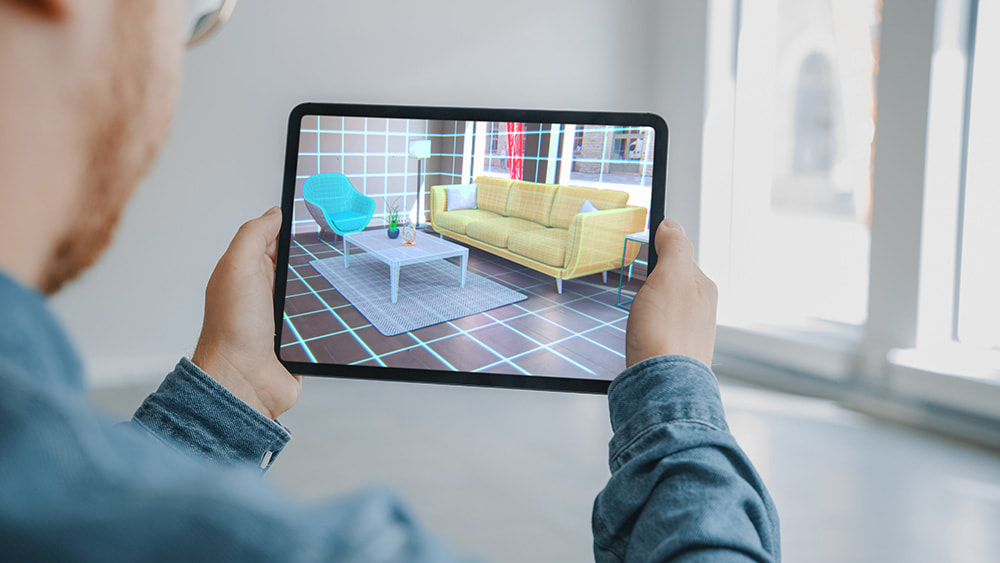 Are you smarter than a floor lamp? Probably, but digital technology has permeated home décor in ways we’d never have imagined. What once was considered showy and pretentious is quickly becoming a source of convenience, posing the inevitable question of “why not?” SMART technology dates back to the late 1980s, when all tech was in a veritable explosion of growth and experimentation. Patented as DViT (Digital Vision Touch) technology, it represents “self-monitoring, analysis, and reporting technology.” So the term itself is self-fulfilling, with roots that are – like most nouveau concepts coming out of the Silicon Valley – acronym-driven. Cell phones were early adapters, facilitating operations based on apps or voice instruction. Our shared friend Alexa, Amazon’s SMART tech contribution, stands ready to answer questions to the best of her ability. But how can SMART technology make your life easier? How about turning on lights in a dark room based on a voice command? Turning off your oven without being near the kitchen? It seems futuristic, but it’s not exactly superfluous. Imagine entering a dark house and having to navigate around furnishings to manually turn on lights. That reality for many has transitioned into obsolescence in the era of SMART technology. In the vein of television remotes, SMART operations that kickstart lighting fixtures and a host of other essential living components are the wave of the future and an integral part of the present. SMART lighting harnesses an LED concept to emit light through a process that may be TMI (too much information) for the lay reader. Let’s just say it’s a handshake between like-minded digital waves, and it accomplishes tasks such as turning on, dimming, and turning off lighting. It can make ultra-contemporary fixtures and lamps change lighting color, or adjust brightness based on the time of day. Versions are automated, while others kick in with voice commands or instructions given through a cell phone app. The Ins and Outs SMART technology ventures outdoors as well. Check out this sleek SMART garden wall light, an upscale addition to covered patios. Or make a splash with this high-end, artistic indoor SMART ceiling light. But though SMART technology conjures up visions of decadence, it’s also a mainstay in simpler, more traditional light sources such as this floor lamp. The key is not in the external structural design, but rather the engine that drives lighting. This relatively inexpensive wall-plug SMART outlet serves a number of functions necessary for products using Apple products, Alexa-enabled devices, Siri voice commands, and even Google Assistant. For a more fancy model, try this SMART outlet USB-enabled wall plug Wi-Fi socket using voice control to effect wireless operation from distant locations. Increasingly, furniture manufacturers and even appliance makers are finding ways to incorporate SMART technology within, for example, sectional sofas, allowing for device-charging, light control, and even media operation. An important consideration is the age of your electrical wiring system, naturally. Older structures would need updating to be compatible. But if you’re contemplating a remodel, or building a new home or office building, you should put SMART technology at the top of your list of must-haves. Photo by Rodion Kutsaev on Unsplash
0 Comments
The dizzying pace of futuristic strategies to enhance your online store has a somewhat new entry, and you might want to pay attention. Enter “augmented reality,” or AR, to the mix of methods for capturing and keeping a customer base devoted to revisits. This is a proven hack to showcasing the best of your product mix. The definition of augmented reality is an overlay of computer-generated imaging over an authentic environment. In lay terms, it means AR picks up on an element in the real environment, then inserts objects related to it using varying levels of interactivity. Sound complicated? It may, but as with any emerging technology, there is plenty of help to get you started. First, evaluate how useful it will be to your business. If your products are heavy on design (as opposed to strictly functional and generic), AR can make them come to life for potential buyers. All smart phones are equipped with AR-capable functionality. Beyond this, the visualization customers experience will put into context how the product will work in their everyday world. This is an ingenious invention. Let’s talk numbers.
The perks of augmented reality are obvious. Whether you sell fashion, sporting equipment, home goods, or gardening tools, the ability to craft a moving image of how your products will appear in the real life scenario is invaluable. Furniture sellers may allow potential buyers to superimpose a sofa into their living room using AR over a smart phone, which saves them the trouble of imagination. You get the idea. It’s the next-level boost for remote commerce that is sorely needed. But there are restrictions, naturally. Smart phone viewing scales down the actual size to virtual size. Though phone users are accustomed to this adjustment, it’s not perfect as a way to present your products. Counter this by getting tutored on a more streamlined, effective presentation. Cost is another issue, as many e-tailers are budget-conscious. Complex apps for AR can be spendy. Consider this as part of your deliberations, taking into account the importance and likely success of capturing buyers through virtually real imaging. There are other drawbacks, but also other definite pluses that aren’t mentioned here. Your best bet is to research, research, research. Start here for a comprehensive primer on how to make this technology work for you. If augmented reality is not for you now, it may be in the future as your online store grows. Keep in mind its robust features and potential, and continue to study AR as its technology advances. But if you’re ready to take the plunge, there’s no time like the present. |
Archives
October 2021
Categories
All
|




